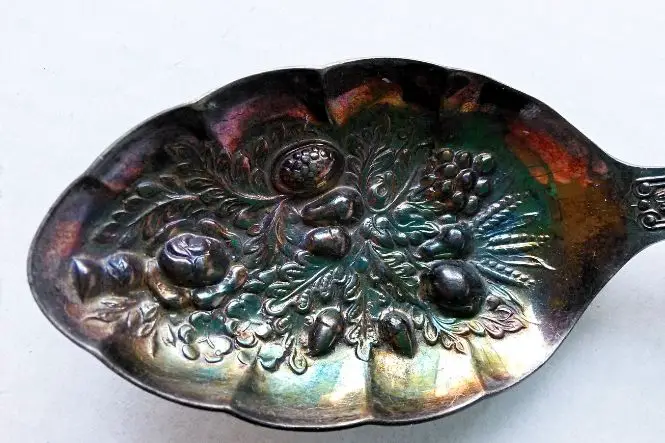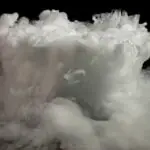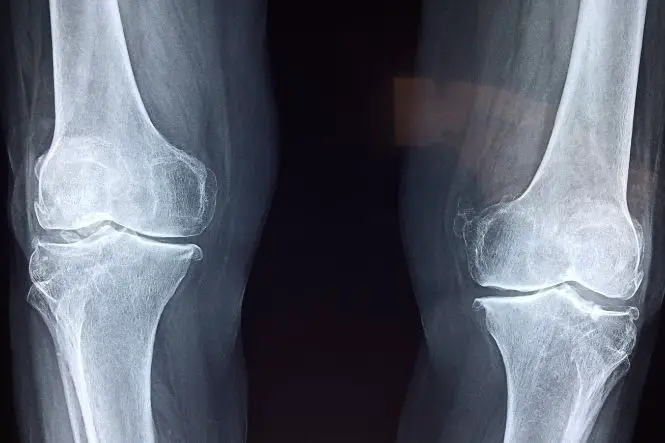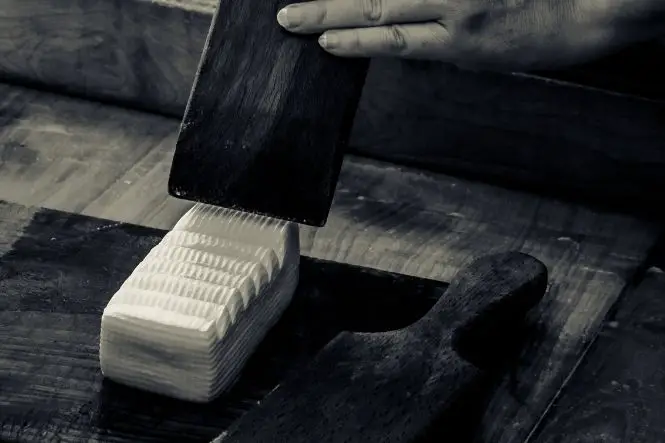After a while, even the best and most carefully polished silver becomes dull and tarnished, and needs to be cleaned again. Why does it tarnish, and how can it be made shiny again?
Why Does Silver Tarnish?
Silver reacts with the sulphur in the air to form silver sulphide. This is black, and so a fine layer of silver sulphide will make the silver look dull and grey. Some silver polishes work by using a fine abrasive to remove the silver sulphide from the surface. Others, including silver polish dips, dissolve the silver sulphide, leaving the silver behind. Both methods remove a little of the silver. Using the reaction between silver and aluminium will clean the tarnished silver without losing any of the precious metal.
Cleaning Off the Tarnish
Find a deep aluminium foil container, such as a clean takeaway container, or line the bottom of a heatproof dish or bowl with aluminium foil (shiny side up). Lay a piece of tarnished silver, such as a teaspoon, on top of the foil, making sure that it touches. Stir a tablespoon of bicarbonate of soda into boiling water and pour this over the tarnished silver, making sure that it is covered. Leave it until the tarnish begins to disappear – turn the tarnished silver over if required, to allow the other side to touch the aluminium. Take the silver out (be careful, it will be hot), rinse it well, and polish it with a soft cloth. Has all the tarnish gone? If not, try it again with a fresh solution and a fresh piece of aluminium foil. What does the aluminium foil look like? Has it changed?
Try this again with cool water – does it work more quickly or more slowly? Does it work if the silver is not touching the aluminium? Does is work with washing soda crystals, and is this quicker or slower?
This is an eco-friendly and simple way of cleaning silver, but don’t try it with anything that might be damaged by the solution, such as a watch, or jewellery that contains stones or enamel inlays, or has a special finish.
How Does It Work?
The bicarbonate of soda solution removes the tarnish by converting it from silver sulphide back to silver, and so does not remove any of the silver. This is because aluminium is a more reactive metal than silver. The sulphur has a greater affinity with the aluminium than it does with the silver, so the sulphur in the silver sulphide moves to the aluminium, creating aluminium sulphide. This is yellow, and may form as a fine layer on the surface of the silver foil, or as small yellow flakes in the bottom of the dish.
The reaction is faster with a hot solution compared with a cold solution. The silver and the aluminium must touch each other as a small electric charge runs between the two metals. This is an electrochemical reaction, and is the same type of reaction that happens in batteries. The bicarbonate of soda or washing soda crystals solution provides a conductive solution to help the reaction, and the heat makes the reaction happen more quickly.






